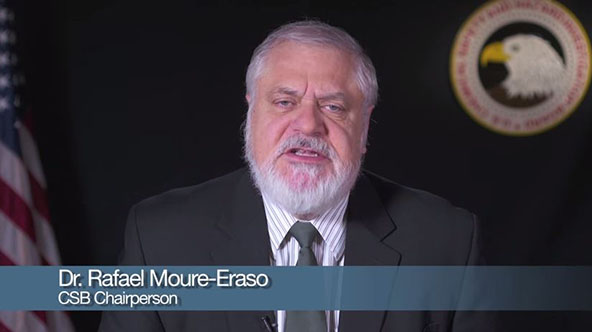Last month, both the Chemical Safety Board (CSB) and OSHA used the ten-year anniversary of the BP refinery explosion in Texas City, TX to call for increased regulatory power and updated safety standards. Fifteen people were killed and 170 injured in the explosion that occurred when hydrocarbon vapors came into contact with an ignition source (still unknown, but suspected to be an automobile exhaust pipe). A subsequent investigation of the accident found organizational and safety deficiencies at all levels.
Embattled outgoing CSB chair Rafael Moure-Eraso issued a video statement about the anniversary in which he noted: “The disaster one decade ago at BP Texas City was the most serious refinery accident ever investigated by the CSB. And our investigation revealed gaps in the standards and practices that likely still exist today.”
In its investigations of the explosion, the CSB said it found that “warning signs of a possible disaster were present for several years” but went uncorrected thanks to “a weak safety culture and a deficient process safety management program.”
The CSB characterized these deficiencies as a lingering problem throughout the industry, and pointed out their presence in major accidents since Texas City — such as the 2012 Chevron refinery fire and the 2010 Tesoro refinery explosion.
OSHA also marked the anniversary of the disaster with a message from Jordan Barab, deputy assistant secretary of labor. Mr. Barab noted in his statement that: “In the decade since [Texas City], workers have died in similar disasters at West Fertilizer in West Texas; Tesoro in Anacortes, Washington; DuPont in Laporte, Indiana; and many more. [. . .] It’s important to remember that there are almost always warning signs and that occupational disasters like these can be prevented. None of the named explosions had unique or unpredictable causes; each repeated a lesson that the industry should have already learned.”
OSHA noted that it leveled $21 million in citations to BP after Texas City — at the time, the most in its history — and that BP incurred a subsequent $87 million fine for violating the settlement agreement.
In their commemorations, both OSHA and the CSB made clear that they feel the government could be doing more to prevent similar disasters from occurring in the future.
CSB chair Moure-Eraso said: “The CSB believes that current federal and state regulations do not focus enough to preventive measures intended to reduce process risks.” He went on to recommend the CSB be given more robust regulatory oversight and increased power.
In its statement, OSHA claimed that its ability to level large, deterrent penalties is problematically limited by constraints in the OSH Act dating from 1970. It further noted that its Process Safety Management Standard has not been updated in more than 20 years, and that after the West Fertilizer disaster of 2013 it took an official action from President Obama to implement more stringent requirements and practices in the form of Executive Order 13650.
For more information on the Texas City refinery explosion, you can read the final CSB Investigation Report here, and see OSHA’s list of site violations and subsequent settlement agreements here.







